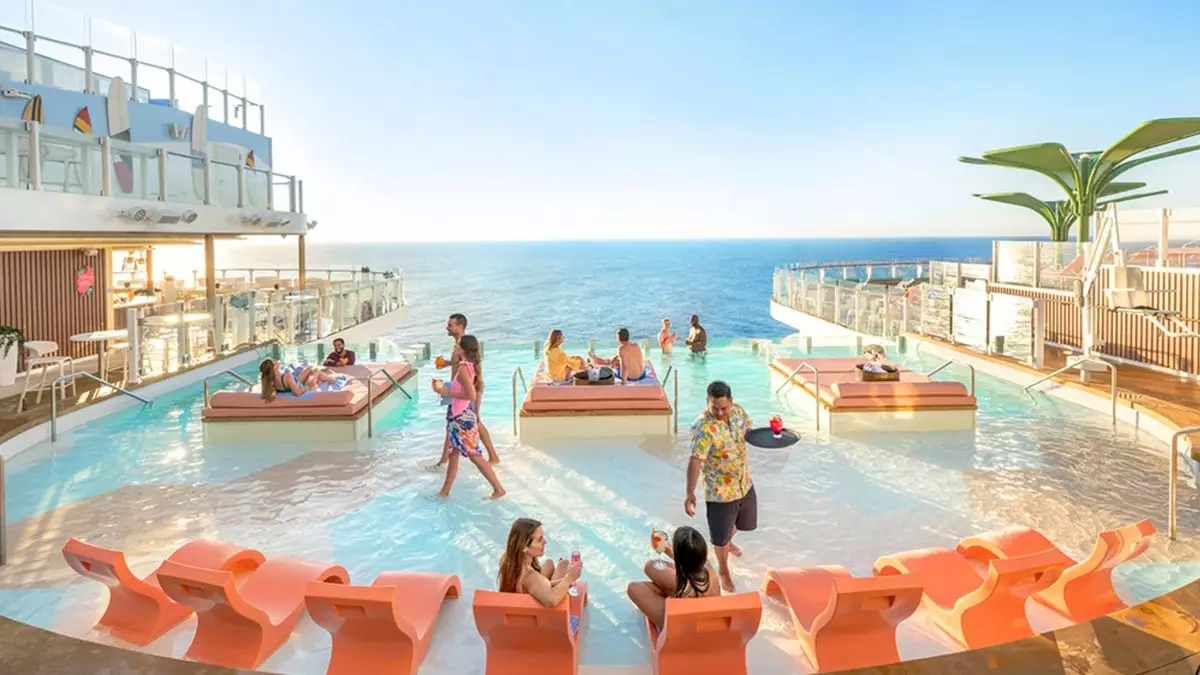The cruise industry has navigated through choppy waters recently, with the Big Three cruise lines—Carnival Corp, Norwegian Cruise Line Holdings, and Royal Caribbean Group—demonstrating surprising financial resilience and optimism. As the hospitality sector, particularly hotels, indicates a cooling growth trajectory, the sea-faring giants have been consistently adjusting their full-year guidance upwards. This contrasting trajectory raises intriguing questions: What supports the cruise industry’s sustained momentum, even amid fluctuations in the broader travel landscape?
Economic Divergence: Cruise Lines vs. Hotels
Recent analyses have illuminated a notable divergence in growth between cruise lines and hotel sectors, primarily focusing on the ongoing price adjustments post-pandemic. Robin Farley, a travel industry analyst from UBS, highlighted this contrast. While hotel rates have surged—showing an increase of 20% for U.S. rates, 31% for resort rates, and an astonishing 49% for the Caribbean—the rates for cruises have increased at a slower pace. The Big Three’s net per diems reveal a cumulative growth of 6% for Carnival, 9% for Norwegian, and 16% for Royal Caribbean since pre-pandemic times. This indicates that while cruise prices are rising, they are doing so more modestly compared to the land-based alternatives.
Further examining these figures reveals a deeper layer to this narrative. The “value gap” between cruise vacations and hotel stays remains a crucial aspect, allowing cruise lines to maintain competitiveness without necessarily lowering prices. This price gap, as Farley argues, remains considerably advantageous for cruise lines, who find themselves in a unique position to capture market share, particularly from consumers looking for cost-effective vacation options.
One of the critical factors contributing to the success of the cruise industry lies in the growth of onboard revenue. The concept of “net per diem” serves as a useful metric here, encompassing both ticket prices and onboard spending by passengers. As travel resumes, the trend has shifted; individuals are spending more on amenities and experiences once they are onboard ships. This pivot not only enhances the potential for increased revenue but also buffers the cruise lines against potential downturns in ticket sales.
Royal Caribbean Group has seen a significant leap in its net per diem, which Farley attributes in part to its newly established private island destination, Perfect Day at Coco Cay. This investment is indicative of a broader strategy where quality and unique offerings entice travelers back. With Carnival Corp reporting that 37% of its onboard revenue is now sold in advance, organizations are effectively locking in business beyond just ticket sales—demonstrating a proactive approach to consumer spending.
As the industry emerges from pandemic-related constraints, shifts in consumer behavior have also played a pivotal role. More travelers are gravitating towards direct bookings, which bypass traditional commission models, fostering revenue growth from onboard purchases that do not directly reflect as fare increases. It’s also worth noting that passengers are demonstrating a willingness to pre-book services and experiences, such as cabanas and Wi-Fi packages—another avenue through which cruise lines capture additional revenue without impacting base fares to the same extent as hotels.
Moreover, through strategic management of onboard offerings—like enhanced dining experiences or exclusive entertainment options—cruise lines are positioned to adapt their pricing with agility. This flexibility is vital; given that ticket prices are often set months in advance, being able to adjust the offering can lead to higher customer satisfaction and increased per-passenger spending.
The outlook for the cruise industry suggests a robust potential for growth, driven by ongoing price advantages and innovative onboard experiences. While economic challenges may persist, the strategic positioning of cruise companies enables them to capitalize on a demographic shift towards experiential travel. By reinforcing the value proposition afforded by cruises—not just in terms of pricing but also in unforgettable experiences and conveniences—the Big Three are well-equipped to confront competitive pressures head-on.
As cruise lines continue to adapt to market dynamics and evolving consumer preferences, it remains clear that the sector is not merely surviving but poised for growth. This resilience, coupled with a strategic eye towards future innovations, may enable cruises to redefine travel experiences in a post-pandemic world, thus demonstrating that there is indeed a sea of opportunity beneath the surface.

